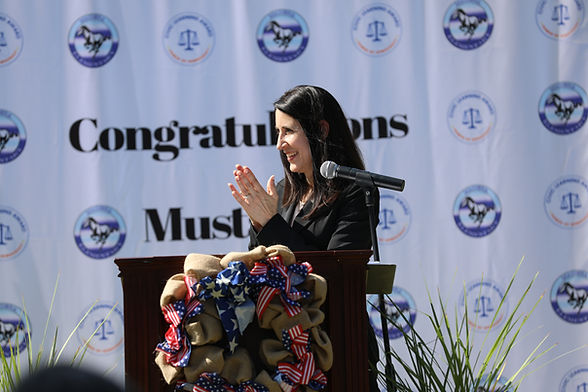Award Plannng Guide

Completing these steps throughout the year will make your application stronger and easier to complete.

✅ 1. Designate a Civic Learning Lead or Team
-
Appoint a teacher, administrator, or student leader to coordinate your school’s civic learning efforts and serve as the main point of contact for the application.
-
Set up a shared Google folder to collect documentation throughout the year (photos, student work, news clippings, etc.).
✅ 2. Align with the Six Proven Practices
Start integrating and documenting activities in each category:
-
Classroom Instruction
-
Identify lessons across subjects that include civic content (not just in history/government).
-
Start saving lesson plans, guest speaker notes, or rubrics as evidence.
-
-
Discussion of Current Events
-
Schedule weekly or monthly classroom discussions on real-world issues.
-
Capture student reflections, videos, or quotes.
-
-
Service-Learning
-
Launch service projects tied to civic themes.
-
Document pre- and post-reflections, especially for student-led initiatives.
-
-
Extracurricular Civic Activities
-
Encourage clubs like Youth & Government, Mock Trial, Model UN, Environmental Action, or Student Media.
-
Take attendance at meetings, track participation.
-
-
Student Participation in Governance
-
Promote student councils, advisory groups, campus elections.
-
Include student involvement in school site council, school climate work, or discipline policy review.
-
-
Simulations of Democratic Processes
-
Schedule mock trials, elections, legislative hearings, or town halls.
-
Include photos, agendas, or sample ballots in your documentation.
-
✅ 3. Track Participation Rates Early
-
Create a spreadsheet to estimate what percentage of students are involved in civic learning inside or outside the classroom.
-
This is a required metric on the application, and stronger schools often cite high participation.
✅ 4. Connect with Community Partners Now
-
Reach out to local courts (Judges in the Classroom), city council, nonprofits, or advocacy groups.
-
Schedule at least one guest speaker or field trip during the fall.
✅ 5. Include Student Voice
-
Let students plan or lead at least one civic activity.
-
Start a folder of student quotes, opinion pieces, campaign posters, or surveys that reflect their leadership and learning.
✅ 6. Involve Families
-
Share your civic goals at Back-to-School Night or in newsletters.
-
Invite parents to participate in civic events or volunteer as guest speakers.
✅ 7. Plan for Reflection & Evidence
-
Schedule a day in January or February for students and teachers to reflect on what they’ve done.
-
Prompt reflection using questions from the application (e.g., “What challenges did we face? What impact did our project have?”)
✅ 8. Review Last Year’s Application Early
-
If your school applied in a previous year, gather feedback or scoresheets (if available).
-
Look for opportunities to improve sections that were weaker.
✅ 9. Keep Multimedia Evidence in Mind
-
Take photos, screenshots, or short video clips during each activity.
-
Begin thinking about an optional video supplement—student interviews, footage from civic projects, or community events.
✅ 10. Check Your LCAP
-
Does your school’s Local Control and Accountability Plan (LCAP) include the word “civic” or “civic engagement”? If yes, save a copy—it’s worth extra credit.
.png)